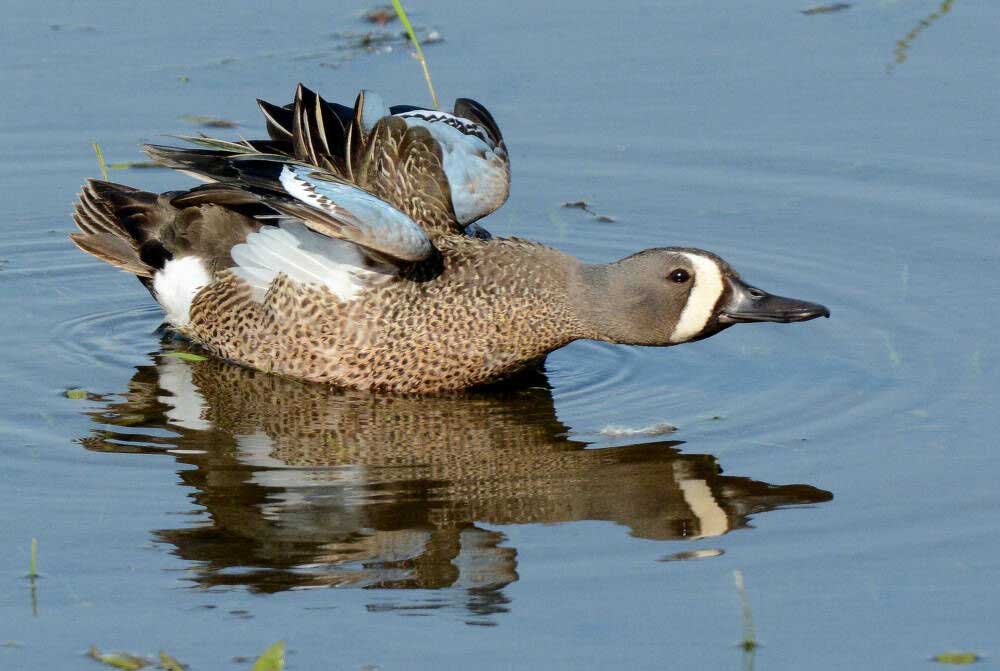Seeing Blue: Texas hunters set their sights on early blue-winged teal next
Published 4:31 pm Sunday, September 4, 2022

- Blue-winged teal are the earliest arriving waterfowl in Texas each fall. The special season has become a hunter favorite around the state, but especially along the coast.
When it comes to a passionate interest, waterfowl hunters are about as rabid as they come. To get up well before daylight, squeeze into ridiculously tight neoprene waders and head out onto the water in freezing temperatures you must either be crazy or beyond consumed by the sport.
However, there is a two-week period each fall when duck hunters get a reprieve from the worst of conditions and that is the early teal season running Sept. 10 through Sept. 25. Texas is one of 24 states with an early season, but nowhere is it as popular as it is here.
“Teal hunting in Texas is an interesting piece of its own,” explains Kevin Kraai, Texas Parks and Wildlife Department waterfowl program leader. “It has grown into its own culture, and it is something that’s maintaining itself.”
In Texas, it is estimated that about 20,000, or a quarter of all duck hunters, hunt the early season.
While some duck populations have struggled in recent years because of drought in the breeding range, blue-winged teal have thrived. This year’s spring breeding count was up 19% compared to the last count in 2019 and is 27% above the long-term average.
The bluewing season exists because the birds are the earliest to migrate south and have traditionally moved on to wintering grounds in Mexico and South America by the time the regular season opens in October or November.
“It is largely driven by day length and by lunar phases and the big full moons,” Kraai said of the migration trigger. From the beginning to the end of August in North Dakota, the amount of daily daylight decreases almost an hour and 15 minutes.
“The traditional theory is that adult males lead the way, and that started a couple of weeks ago. When you get the lunar phase in the first of September, they are going to be on the move,” Kraai added.
Teal are an especially adaptable species when it comes to finding habitat. While most will eventually end up along the Texas coast, they often short-stop on public reservoirs, open private lakes and Panhandle playas.
While the early season on East Texas lakes can be hit or miss, Kraai said this year’s drought conditions could result in more birds locally if the shoreline vegetation is flooded.
Kraai said better conditions year-to-year are found in the Oaks and Prairies region, the Panhandle and of course along the coast where outfitters have perfected managing habitat.
“Teal are still going to go where the habitat is like the Oak Prairies and the Texas Coast where many (outfitters) have the ability to put water on the landscape. It can be really really good up and down the Texas coast if there is an abundance of fresh water,” Kraai said.
Like much of the remainder of the state, the coast has also been impacted by dry weather this summer, however, while some of the marshes still have water others are going to have to be pumped full.
Although Texas is supposed to be just a stopover on the birds’ southern migration, Kraai said biologists are seeing more of the birds staying in the state and becoming a major part of hunters’ bag limits.
“In the last decade we have seen a large percentage staying in Texas. That is new because the reason the season even exists is because we didn’t have a chance to hunt them in the regular season,” Kraai said.
He said the reason seems to be related to climate change. Like white-winged dove and whistling ducks that have migrated into northern Texas, the teal are not having to go farther south to find warm temperatures throughout winter.
Along with the mild weather, another advantage to hunting blue-winged teal is that hunters can knock down the birds using any shotgun including a 28-gauge. Some prefer to keep their 12-gauge in the closet this time of year because it is just too much for the diminutive birds.
Scouting shallow water is a key part of teal season success, but hunters can do more damage than good if they are not careful. Since there is only so much shallow water on area lakes and because the birds are just laying over in Northeast Texas, it is easy to chase them out with boating traffic. A pair of binoculars to scout from a distance is one way to mitigate disturbance.
Kraai said there should be a lot of young birds in this year’s flight, meaning depending on the pressure down the Central Flyway, decoying should be successful, but use small spreads of a dozen or two.
The daily bag limit during the early season is six. Hunters are also allowed to take geese in East Texas during the two-week season.
Along with a Texas hunting license, hunters are also required to have a state migratory bird endorsement, a Federal waterfowl stamp and Harvest Information Program (HIP) certification.






